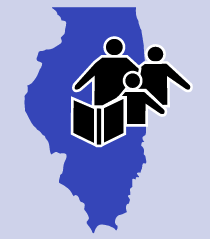
Play and Learn Indoors
Winter can be challenging for families with infants and toddlers. The snow, rain, and cold may keep you indoors during playtimes. You can still work on early intervention outcomes when you cannot get outside to play. Your daily routines are full of moments that can encourage your child’s independence and participation. Improving self-help skills such as a child dressing and feeding oneself are common EI outcomes. Language skills are another focus for many families. Simply looking out the window and talking about the weather can build vocabulary and language skills. Your child builds receptive language vocabulary while listening to you, and she might surprise you one day by repeating what you told her.
Infants and toddlers like to move, and when they are moving, they are developing motor skills, spatial awareness, and independence. Even though winter weather may keep you indoors, you can still climb, dance, and build muscle strength and coordination. Use your couch to build pillow mountains to climb or dance to the music and practice copying each other’s movements. If you are stuck inside on a snowy day, it is a perfect time to master safe climbing up and down the stairs. Help your child practice crawling forward and backward with your help.
Look at your home space and consider all the possibilities for play and learning. Your kitchen space may be filled with safe items to discover, such as wooden spoons, measuring cups, and unbreakable bowls. Practice stacking and nesting these items with your child. This builds his spatial awareness. Pretend to cook and feed each other with older infants and toddlers. Pretend play is a natural way to develop social skills such as turn-taking and manners. Spend a little extra time in the bathtub filling and emptying containers of water when the weather keeps you inside. Add a wire whisk to whip up bubbles and enjoy a relaxed time to play with your child.
Planning for indoor play can help keep children busy and engaged. Some families like to place “treasure baskets” in different rooms. These baskets can invite your child to explore. You can add safe items from around the house for your child to explore. Having two baskets that you can swap with different objects can keep your child’s interest high.
Consider filling your basket with household items such as measuring cups, hats, scarves, or plastic mirrors. Look at the materials from which these objects are made.
See-through cups, mirrored metal surfaces, or textured surfaces are especially interesting to very young children. Hiding toys in zippered cosmetic pouches and containers can be a new way to play “peekaboo.” Even the laundry basket is full of interesting textures, colors, shapes, and sizes to talk about! Don’t miss our newest tip sheet, “Every Day EI: Do the Laundry,” in this newsletter for more ideas.
How to Build Strong Family-Professional Partnerships
It is important for early intervention (EI) professionals and families to partner with one another. When professionals and families partner with each other, children make greater progress. Such partnerships may occur in a variety of ways. For example, families may partner with professionals by learning the strategies professionals use with their children and then by using those strategies in the home. When families reinforce EI strategies, children are more likely to make progress. Conversely, professionals may partner with families by asking families about the strengths and preferences of their children. By using parent knowledge about their children, professionals can individualize strategies to best meet the child’s needs.
Family-professional partnerships are characterized by five principles: respect, equity, commitment, communication, and advocacy. Below, are some strategies for professionals and families to exemplify each principle.
| Principle | Family | Professional |
| Respect | Acknowledge that the professional may have unique training about the needs (e.g., gross motor, fine motor, language) of your child. For example, thank the professional for sharing their expertise by stating “We are so happy to have an occupational therapist on our EI team.” | Acknowledge that families are experts on their children. For example, ask family members about their child‘s strengths, interests, and specific needs. |
| Equity | Work as a team with the professionals; each of you have important roles to play in EI. For example, develop individual relationships with each team member. Each of you play important roles in the EI process. | Work as a team with families. Families and professionals are equal partners in EI. For example, tell parents, “We are looking forward to partnering with you in the EI process. The overarching purpose of EI is to support families in being equal partners.” |
| Commitment | Demonstrate to the professional that you are implementing the EI strategies in the home. For example, tell an EI professional, “We have been using this EI strategy at home and have seen great progress.” | Demonstrate to the family that you are dedicated to working with the family and their child. Offer various ways to include the family in decision-making. For example, ask families their opinion about EI strategies; use open- and close-ended questions to solicit their feedback. |
| Communication | Offer consistent, honest, and frequent communication with the professional. For example, reach out to EI professionals with both your concerns and celebrations about your child. | Offer consistent, honest, and frequent communication with the family. Offer various ways families can get in touch with you, as the professional. For example, offer families multiple methods of communication, including e-mail, text, phone calls, and in-person visits. |
| Advocacy | Voice your concerns for your child. Remember that you have an important role in EI. For example, speak up in meetings with EI professionals about your opinions. You are your child’s best advocate. | Encourage the family to voice their concerns for their child. For example, remind families that they can call a meeting with the EI team at any time. |
The Role of Service Coordinator in Early Intervention
Many families referred to early intervention often ask, “What is a service coordinator? What do they do?” The role of the service coordinator is unique, multifaceted, and complex. Service coordination is the only mandated service under Part C of the Individuals With Disabilities Education Act, and it is provided for every family in early intervention at no cost. A service coordinator works in partnership with the family—from initial referral through transition out of early intervention—to help the family gain access to the early intervention system, identify supports and services that meet the family’s needs, and understand the family’s rights and procedural safeguards.
Service coordinators collaborate with families by exchanging information with families throughout the process. They gather information from families regarding their family and child, including their priorities, strengths, and needs, and they share information with families about the early intervention system, such as its rules, regulations, specific timelines, and services. This exchange of information helps the family make informed decisions.
A service coordinator brings expertise about the early intervention system, including knowledge about rules, regulations, and processes; knowledge about resources, supports, and services available; and knowledge and skills in teaming and collaboration. Each family is linked with a service coordinator who will partner with and support the family.
Some responsibilities include:
- Coordinating and scheduling the intake, screenings, and evaluations/assessments, which includes working with the family to jointly determine how and where they will be done and who will do them. This marks the beginning of a partnership with the family that will continue to grow over time.
- Informing families of their rights and providing examples to support understanding.
- Coordinating and supporting the family in the development of the Individualized Family Service Plan (IFSP), ensuring that the family’s priorities and strengths are reflected in the IFSP.
- Informing the family of available services and how to access them. This entails supporting the family in provider selection and providing referrals to selected providers.
- Coordinating the delivery of services and supports in a timely manner.
- Checking in with the family routinely and ensuring that the family receives the services outlined in the IFSP.
- Coordinating with medical, health, and community providers.
- Developing a transition plan together with the family to continue services after their child turns 3, if appropriate.
- Informing families of advocacy services and supporting families in advocating for their child.
The key to a service coordinator’s work is building a trusting relationship with the family. A service coordinator will take a family-centered approach at all times, acknowledging the family as full and equal team members, recognizing family strengths, and respecting family beliefs and values. This enables families to have access to support and information about their child’s needs, a deeper understanding of their child’s strengths and needs, and access to quality supports that are effective, coordinated, and individualized to their needs.
Related Resource(s)
- Tip Sheets: Everyday Early Intervention: Let’s Do the Laundry
- Resource Guides: Indoor Play

